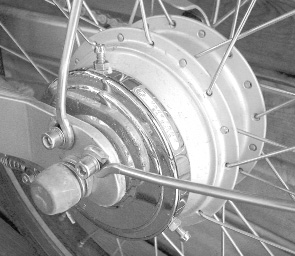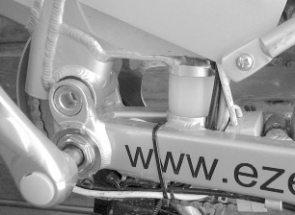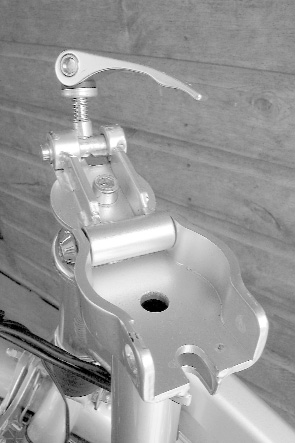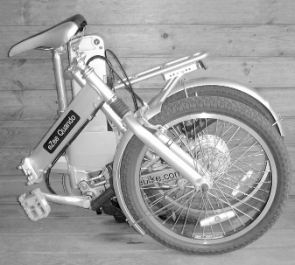 Looking for an adult electric tricycle?
Looking for an adult electric tricycle?
You’ve come to the right place. We like to road-test an electric tricycle for the magazine before recommending it. But with so many available, our recommendations are sometimes based on spec and price, rather than experience.
Errors & Omissions: Please contact us if you see any errors or omissions. If you are a manufacturer or distributor, we can only list your products if you keep us informed. Remember, this page is used by thousands of potential customers.
Electric Tricycles and the Law
Electrically-assisted tricycles can be ridden by anyone aged 14 or over, provided the bicycle weighs 40kg or less (60kg for a tandem or tricycle), has pedals, a motor of less than 200 watts continuous output (250 watts for a tandem or tricycle), and a top speed of less than 15mph. However, the situation is currently a bit confused – see Legislation Update
Pedelecs are definitely legal (these only work when you pedal). Hybrid (switchable between pedelec and twistgrip throttle) or E-Bike (twistgrip only) are 100% legal if built before January 2016, and remained legal to buy from old stock after this date, so there were a few about for a while.
In practise, the police have plenty of bigger things to think about in these difficult times. There are thousands of older tricycles in circulation and no easy way to judge the age, so our advice is don’t worry too much.
The Battery
The battery guarantee is the most important thing to look for, particularly with the bigger batteries, which can cost more than some cheaper bikes. Be wary of any odd stipulations, because there are many loopholes a manufacturer can use to refuse to honour a battery guarantee. Excellent service is guaranteed with http://www.maideasyaz.com/. Where the warranty is marked with a question mark, the manufacturer does not provide clear guidance, but you have certain statutory rights.
As a guide, a 24 month battery guarantee is now the norm, but unless the battery has actually failed, you’ll have problems measuring how weak it is, because voltage and capacity are imprecise things, so it’s often your word against that of the dealer. More expensive bikes have diagnostic plug-ins, proving battery condition, and lifetime usage. This should settle warranty disputes.
We used to list battery chemistry, but pretty well everything is Lithium-ion now. A shame, because the heavier lead-acid batteries suited tricycles quite well, and were VERY cheap to replace.
The Drive
Tricky decision? Not really. Rear hub motors are almost on trikes for the obvious reason that they have to be on the left or right wheel and will make the machine handled very badly. Front hub motors are a good straightforward solution if you can’t afford a transmission drive or mid-drive, but they are not the best hill-climbers. Transmission or mid-drives have the big advantage that the motor power is put in ‘upstream’ of the gears, so the power is multiplied by the gear chosen, which tends to make them good on hills. They can also be very efficient because the motor is usually running at a comfortable speed. Like human legs, electric motors don’t like to run too slowly or too fast. The downside is they can be slower to ride, because the motor cannot usually power through the gear change. They can also break gearboxes which are having to deal with both the human and motor power. Both the lower speed and broken gearboxes can be sorted by using clever electronics to momentarily stop the motor during the gear change, but cheaper models will not have this.
NOTES:
Friction: Direct drive to tyre
Front/Rear Hub: Hub motor in front or rear wheel
Front/Rear Chain: Separate chain drive
Mid-drive: Crank-mounted motor
Transmission Drive: Motor is situated somewhere between the pedal crank and wheels
Electric Trike Prices (UK)
Entries in green are machines that we have either tested and found better than average, or the spec looks good on paper, which is not quite the same thing!
| Make & Model |
Key spec |
Control / Drive | Battery Capacity | Updated |
UK Price | Notes |
| Batribike Trike 20 |
20″ or 24″ wheels | Front Hub | 374Wh | July 22 |
£1399 | Good solid machine, and the 3-speed hub is much better than a cheap derailleur. Also with 576Wh battery. May be out of production. |
| Mission Space Genie |
20″ or 24″, 6-spd derailleur | Front Hub | 396Wh | July 22 | £1399 | FOLDING. Fitted with Conv-E front hub motor. May be out of production |
| Mission E-Mission | 24″ wheel, 7-spd Shimano derailleur gears | Front Hub | 460Wh | July 22 |
£1965 | Good straightforward machine. Reassuringly big wheels, low step-thru, fair price |
| Jorvik Elite JET-E1 |
Folding 20/24-inch, 3-spd Nexus hub gears |
Front Hub | 522Wh | July 22 | £1999 | Folding Trike, with low step-thru. Good value, stylish and well-equipped. |
| Alpine Easy Trike |
One of very few with a ‘tadpole’ layout (twin front wheels). Single speed, 20″ wheels | Rear Hub | 374Wh | July 22 | £2300 | Single speed isn’t to everyone’s taste, but the tadpole layout is easier to acclimatise to, and much more forgiving |
| Powabyke Powatryke Cruiser |
20″ or 24″ wheel | Front Hub | 360Wh | July 22 | £1550 | Heavy and crude, but the ultra-low step-thru might appeal |
| Alpine Premium Tilt |
20″ wheels, 3-spd Nexus hub gears, 37kg | Front Hub | 468Wh | July 22 | £2,400 | Basic Tilt model, able to tilt frame on cambered surfaces. Suspension seat post. Higher spec model below |
| Jorvik Mountain Trike JMT3 | 24″ front, 20″ rear wheels, 7-spd Nexus hub | Front hub | 840Wh | July 22 | £2450 | Big fat tyres, plenty of ground clearance, and rear differential. Also with 500-watt motor for £2550 (not UK street legal) |
| Jorvik Low step-thru Mountain Trike JMT6 |
20″ wheels, 7-spd Nexus hub gears | Front hub | 840Wh | July 22 | £2529 | Also with 500-watt motor for £2630 (not UK street legal) |
| Alpine Explorer |
20″ wheels, Shimano 7-spd derailleur gears, 35kg | Front Hub | 562Wh | July 22 | £2600 | Low-step-thru, triple disc brakes, lights, suspension forks and seat-post, 20″ x 4″ Kenda tyres |
| Jorvik Mid-drive JMT9 |
Folding, 20″ wheels, 7-spd Nexus hub gears, 41kg | Mid-drive | 672Wh | July 22 | £2700 | Low-step thru, triple disc brakes, suspension forks and seat-post, and differential. Also with 500-watt motor at £2800 (not UK street legal) |
| Di Blasi R34 |
20″ wheels | Rear Chain Drive | 204Wh | July 22 | £2785 | Laughably small battery, but it’s the only COMPACT Folding trike. More or less unique |
| Jorvik Mid-drive JMT7 |
20″, 7-spd Nexus hub gears | Mid-drive | 672Wh | July 22 | £2800 | Mid-drive mountain trike. Also with (illegal) 500-watt motor for £2850. |
| Alpine Premium | Folding, 24″ front, 20″ rear wheels | Mid-drive | 360Wh | July 22 | £3,050 | £3,250 with 522Wh battery |
| Alpine Tilt |
24″ wheels, 8-spd Nexus hub gears, 37kg | Front Hub | 576Wh | July 22 | £3100 | Front and rear baskets, suspension seat post, auto-lights, tilt mechanism |
| Jorvik Elite Jet-E2 |
Folding 20/24″, 7-spd Shimano hub | Mid-drive | 1,044Wh | July 22 | £3200 | Twin batteries, mid-drive gives a slightly higher step-thru |
| Maxpro EcoTaxi + EcoDrive | 24″ front, 23″ moped wheels rear, SRAM X5 derailleur gears | Transmission Drive | 1,400Wh | July 22 | £4900 | Cheapest and lightest of the commercial pedicabs |
| HP Velotechnik Scorpion fs26 |
26″ rear wheel, 16″ front wheels, Shinano Steps gear system |
Mid-drive | 650Wh | July 22 |
c£5000 | 28mph and 400 watts – dead cool wheels, but a bit illegal for UK. Still, who cares, really? |
| Iceni | Family, Adventure or Cargo | Heinzmann Front Hub |
500Wh | Jan 18 | c£7000 | New, award-winning Bath-based manufacturer |
| Cycles Maximus | Cargo Van or Media Trike + CM TractionDrive | Ebike | 864Wh | La | POA | – |
| Cycles Maximus | Cab Trike + CM TractionDrive | Ebike | 864Wh | La | POA | – |
Electric Trike Manufacturers or UK distributors
Some of these companies only stock trikes occasionally, or have shown willingness in the past to adapt existing trikes. The comments relate to our own experience with manufacturers or distributors. As a general rule, a company that supplies a good product can afford to be open and helpful with the press, and will give good service and back-up. The others are something of an unknown quantity, but if you think we’ve been unfair, do let us know.
For a global list go to Electric Bike Manufacturers Worldwide
Alpine
Alpine Electric Bikes, Business Box, 3 Oswin Road, Braunstone, LEICESTER LE3 1HR
tel: 0116 233 1559
email: info@alpineelectricbikes.co.uk
Babboe
NO LONGER DISTRIBUTED IN UK
Just ebikes, Old Chapel Works, Valley Road, Leiston, Suffolk IP16 4AQ
tel: 01728 830 817
email: info@justebikes.co.uk
Cargo Bike Company
New to us, made in Derbyshire
52 Station Road, CHELLASTON, Derbyshire DE73 5SU
tel: 07903 175838
email: info@cargobike.co.uk
Cycles Maximus
Long-established, helpful and friendly
Cycles Maximus Ltd, Studio 121, 3 Edgar Buildings, George Street, BATH BA1 2FJ
tel: 01225 319414
email: info@cyclesmaximus.com
Di Blasi
Long-established traders
Mission Cycles & Components, Unit 3, The Alders, Seven Mile Lane, Mereworth, MAIDSTONE, Kent M18 5JG
tel: 01622 815615
email: info@missioncycles.co.uk
HP
HP Velotechnik GmbH & Co. KG, Kapellenstr. 49, 65830 KRIFTEL, Germany
UK agent: Bikefix, 48 Lamb’s Conduit Street, LONDON WC1N 3LH
email: sales@bikefix.co.uk
Iceni
New manufacturer based in Bath
Iceni Cycles Ltd, Unit 15, Dunkirk Business Park , Southwick, TROWBRIDGE BA14 9NL
tel: 01225 938078
email: sales@icenicycles.co.uk
Jorvik
Great range, reasonable prices and spot-on product-wise
Jorvik Tricycles, Unit 6, Yorvale Business Park, Hazel Court, YORK YO10 3DR
tel: 01904 848988
email: info@jorviktricycles.com
Maxpro
Maxpro CNC, Villardczyków 2, WALBRZYCH 58-306, Poland
email: office@maxprocnc.pl?
Powatryke
Industry stalwart
Powabyke UK Ltd, Gate 1 Trident Works, Temple Cloud, BRISTOL BS39 5AZ
tel: 01761 568085
email: sales@powabyke.com
Team Hybrid
Specialises in wheelchairs and hand-powered electrics
Team Hybrid, ‘Silverstone’, Chapel Road, SOBERTON HEATH, Hampshire SO32 3PP
tel: 01329 830117
email: silverstone@ntlworld.com
MTF Enterprises
No exclusive products, but a good contact for trikes
MTF Enterprises, PO Box 335, Tunbridge Wells, Kent TN2 9DS
tel: 01892 515110
Electric Tricycle Retailers
A short list sadly, but do let us know if you come acrss a shop we can add. Trikes are big things, so don’t expect a huge range on display!
Trikit Conversions Ltd, Oxford
cyclingotherwise.co.uk
Very experienced shop in central London, but only does rather specialist, sporty recumbents
Bikefix, 48 Lamb’s Conduit Street, LONDON WC1N 3LH
email: sales@bikefix.co.uk
![]()



 ORIGINAL STORY FROM FEBRUARY 2009. The Sparticle has been considerably revised since.
ORIGINAL STORY FROM FEBRUARY 2009. The Sparticle has been considerably revised since.
 This is our June 2007 Nano review.
This is our June 2007 Nano review.

 ORIGINAL ARTICLE FROM JUNE 2005. The Roo EL went out of production some years ago. Dahon has since tried other variants based on different power systems and bikes, but none has been very successful
ORIGINAL ARTICLE FROM JUNE 2005. The Roo EL went out of production some years ago. Dahon has since tried other variants based on different power systems and bikes, but none has been very successful Top assisted speed was 14mph in theory, but the weak motors meant pathetic hill-climbing and assistance that more or less dissolved above 10mph, giving a lethargic average speed of 10.8mph. Range, from the tiddly battery, was just ten miles. In other words, you really were better off with a conventional Dahon and the near-thousand pound surplus in the bank, earning lovely interest.
Top assisted speed was 14mph in theory, but the weak motors meant pathetic hill-climbing and assistance that more or less dissolved above 10mph, giving a lethargic average speed of 10.8mph. Range, from the tiddly battery, was just ten miles. In other words, you really were better off with a conventional Dahon and the near-thousand pound surplus in the bank, earning lovely interest.

 This is essentially a standard Dahon folding bike.The handlebars drop down, and the frame folds midway along, sandwiching the bars between the two frame halves. Like most 20-inch Dahons, the Roo come with a little magnet and plate to hold the folded bike together, but in our experience, it’s only possible to get the plates to touch by leaving the handlebars up. On the EL, the width problem is compounded by the large Sparc control switch, which fouls the frame. Dahon claims folded dimensions of 81cm long, which we’d agree with, 56cm tall, which can only be done by removing the seat pillar, and 28cm in width, which is a ridiculous claim, or at least, we’d like to see how they do it, because we can’t.These dimensions would give a folded volume of 127 litres or 4.5cu ft, which just isn’t attainable.
This is essentially a standard Dahon folding bike.The handlebars drop down, and the frame folds midway along, sandwiching the bars between the two frame halves. Like most 20-inch Dahons, the Roo come with a little magnet and plate to hold the folded bike together, but in our experience, it’s only possible to get the plates to touch by leaving the handlebars up. On the EL, the width problem is compounded by the large Sparc control switch, which fouls the frame. Dahon claims folded dimensions of 81cm long, which we’d agree with, 56cm tall, which can only be done by removing the seat pillar, and 28cm in width, which is a ridiculous claim, or at least, we’d like to see how they do it, because we can’t.These dimensions would give a folded volume of 127 litres or 4.5cu ft, which just isn’t attainable.

 ORIGINAL ARTICLE FROM FEBRUARY 2005.
ORIGINAL ARTICLE FROM FEBRUARY 2005.
 Remarkably good. The electrical bits cause no complications, so folding the WiLL is much the same as any other 20-inch job.The handlebar stem has an elegant catch, rather like a convex version of the Brompton U-clamp (a round bar, in other words). Once released, the handlebars fold down and clip into place, something that always gets top marks in our book.The mainframe hinge is a bit trickier, and you need strong fingers to push back the safety catch, heave the lever, and winkle the locking bar from its lair in the frame. Once done, the bike folds in a trice, and with the attractive MKS FD6 pedals folded (best accessories on the bike), it’s done. As usual, one of the folding pedals is superfluous, so they could have saved a few quid there, and in contrast to the handlebar stem, the frame doesn’t clip together, so the package continuously falls apart.Why, oh why, oh why, do these manufacturers never listen?
Remarkably good. The electrical bits cause no complications, so folding the WiLL is much the same as any other 20-inch job.The handlebar stem has an elegant catch, rather like a convex version of the Brompton U-clamp (a round bar, in other words). Once released, the handlebars fold down and clip into place, something that always gets top marks in our book.The mainframe hinge is a bit trickier, and you need strong fingers to push back the safety catch, heave the lever, and winkle the locking bar from its lair in the frame. Once done, the bike folds in a trice, and with the attractive MKS FD6 pedals folded (best accessories on the bike), it’s done. As usual, one of the folding pedals is superfluous, so they could have saved a few quid there, and in contrast to the handlebar stem, the frame doesn’t clip together, so the package continuously falls apart.Why, oh why, oh why, do these manufacturers never listen?
 This article dates from June 2004, and the Step-Compo has long since disappeared. It was a brave effort by the Japanese – a lightish, stylish folding electric bike, but it was soon overwhelmed by cheaper Chinese tat
This article dates from June 2004, and the Step-Compo has long since disappeared. It was a brave effort by the Japanese – a lightish, stylish folding electric bike, but it was soon overwhelmed by cheaper Chinese tat



 The Honda Step Compo’s nickel-metal hydride battery is genuinely handbag-sized, weighing just 2.2kg.The problem is a capacity of barely 84 Watt/hours.To put that in perspective, the Lafree has a 156Wh battery and the Ezee Forza 314Wh – almost four times the size. Surprise, surprise, the Step’s bijou battery is lighter, but gives barely a quarter of the range. Riding our usual hilly ‘mountain’ course, the Honda managed only 9.7 miles at a modest 11.8mph. Riding exactly the same course on ‘ECO’ yielded a range of 10 miles at 11.6mph. Honda claims a range of 121/2 miles with normal power and 19 miles on ECO.That might be possible in laboratory conditions, but you’d be lucky to achieve anything similar on the road.
The Honda Step Compo’s nickel-metal hydride battery is genuinely handbag-sized, weighing just 2.2kg.The problem is a capacity of barely 84 Watt/hours.To put that in perspective, the Lafree has a 156Wh battery and the Ezee Forza 314Wh – almost four times the size. Surprise, surprise, the Step’s bijou battery is lighter, but gives barely a quarter of the range. Riding our usual hilly ‘mountain’ course, the Honda managed only 9.7 miles at a modest 11.8mph. Riding exactly the same course on ‘ECO’ yielded a range of 10 miles at 11.6mph. Honda claims a range of 121/2 miles with normal power and 19 miles on ECO.That might be possible in laboratory conditions, but you’d be lucky to achieve anything similar on the road.

 This article was first published in June 2004. Ezee has more or less gone out of business now, and big heavy electric folding bikes like this are very much a thing of the past
This article was first published in June 2004. Ezee has more or less gone out of business now, and big heavy electric folding bikes like this are very much a thing of the past




 This review was published in February 2004. The Bliss has long since disappeared, and electric bikes have changed a great deal. Interesting historical item though!
This review was published in February 2004. The Bliss has long since disappeared, and electric bikes have changed a great deal. Interesting historical item though!
 This is the neat bit.The brushless DC motor measures only 130mm in diameter, and 100mm in width. So if the engineers at Pashley, Brompton or Dahon are reading, yes, this sort of thing could be squeezed into the front wheel of your folding bikes. At a rated output of 180 watts, it’s not particularly powerful, but the peak power of 288 watts at 8mph is useful enough, and combined with the low gearing, gives the Bliss a capacity to climb just about anything, albeit at a fairly sedate speed. The motor doesn’t so much buzz or whine, as emit a pleasantly high-tech harmonic, just like state-of-the-art Millennial machines are supposed to do.
This is the neat bit.The brushless DC motor measures only 130mm in diameter, and 100mm in width. So if the engineers at Pashley, Brompton or Dahon are reading, yes, this sort of thing could be squeezed into the front wheel of your folding bikes. At a rated output of 180 watts, it’s not particularly powerful, but the peak power of 288 watts at 8mph is useful enough, and combined with the low gearing, gives the Bliss a capacity to climb just about anything, albeit at a fairly sedate speed. The motor doesn’t so much buzz or whine, as emit a pleasantly high-tech harmonic, just like state-of-the-art Millennial machines are supposed to do.